3-4.
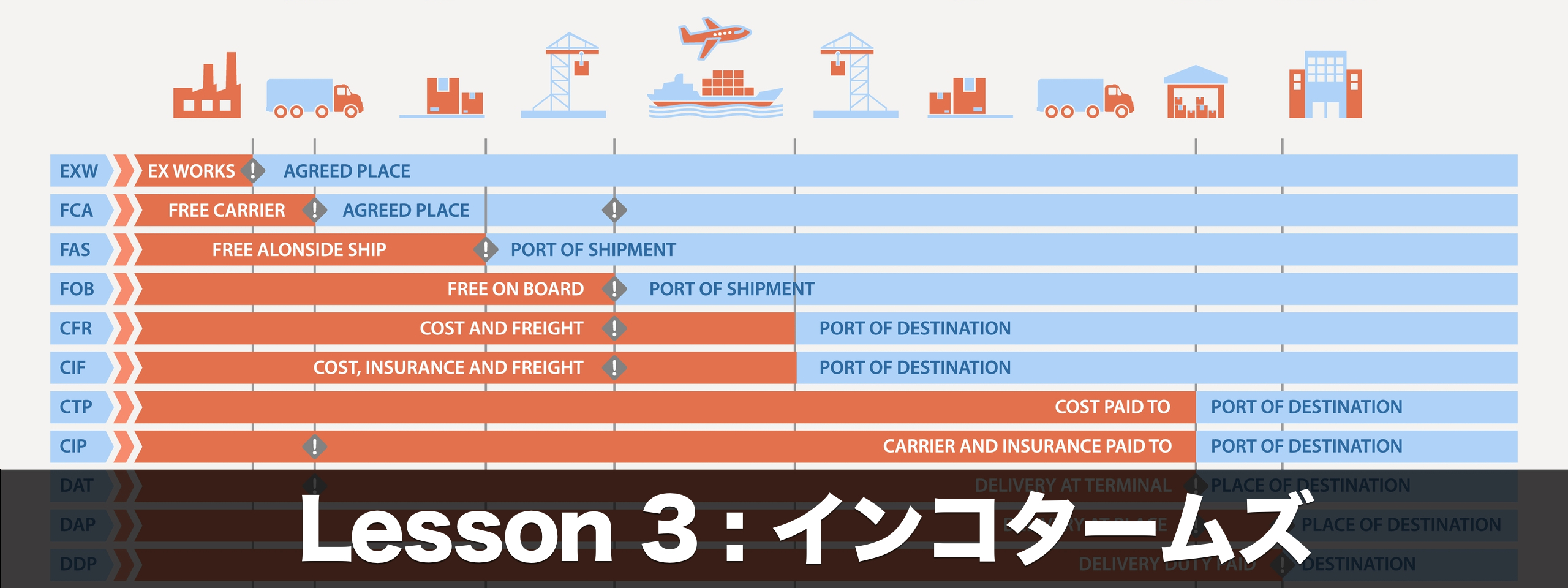
Overview




Learning Points
- Review of Incoterms
- Group C’s Terms and Conditions
- How to Prepare an Invoice
Review of Incoterms
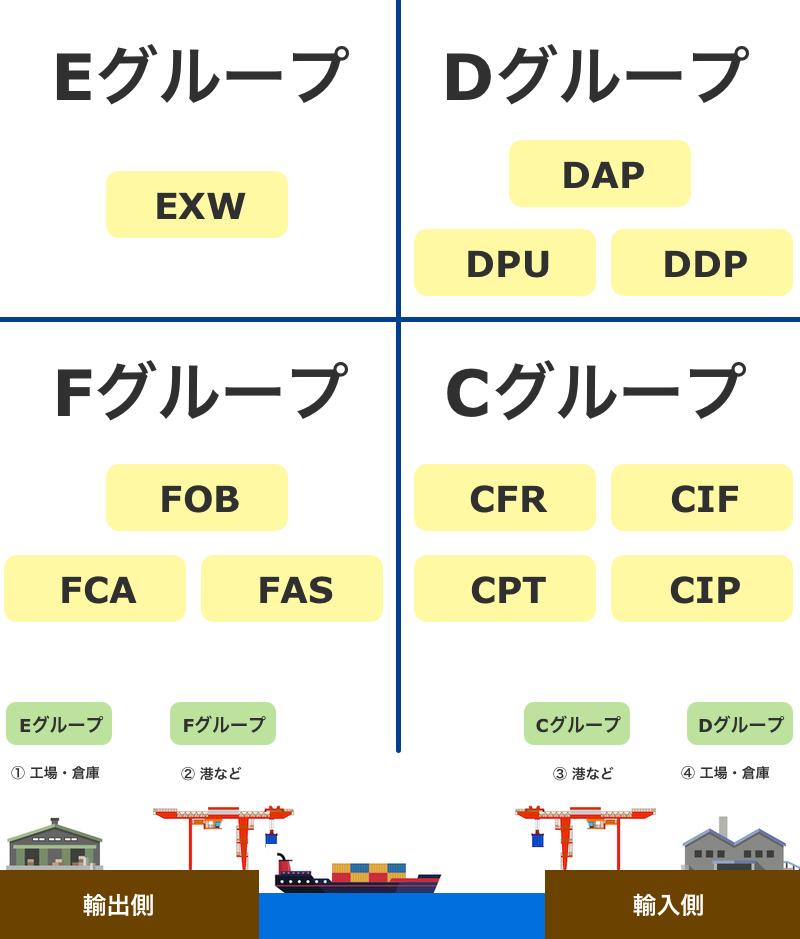
As explained in the previous topic, Incoterms are broadly divided into four groups. The delivery point for Group C is the port of import.
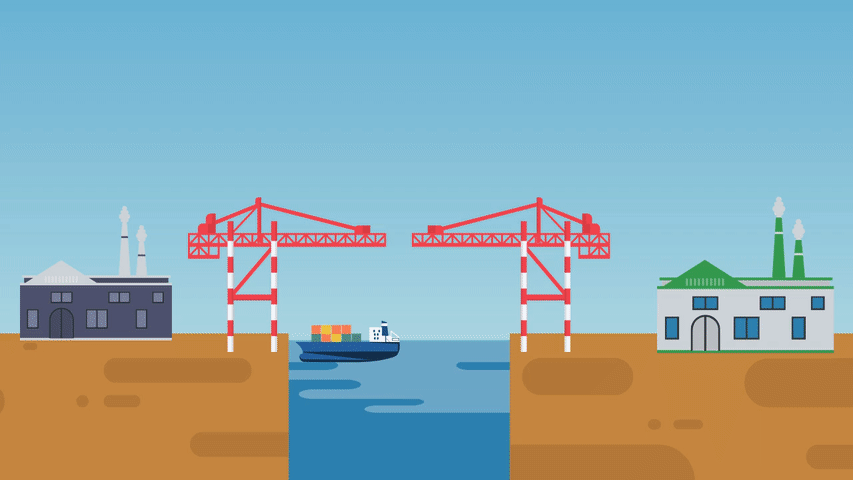

Group C’s Characteristics
Group C has four trading terms as the following:
- CFR (Cost & Freight)
- CIF (Cost, Insurance & Freight)
- CPT (Carriage Paid To)
- CIP (Carriage & Insurance Paid To)
The four trading terms in the C Group are formally distinguished based on the modes of transportation.
・Terms set for conventional ship transportation: CFR, CIF
・Terms set for container ship transportation: CPT, CIP


Group C in Business Operations
Although the above is the official rule, Group C is used practically as follows:
・Terms set for container ship transport: CPT、CIPPractical Work:
・Terms set for conventional ship transport: CFR、CIF
・Terms set for container ship transport: CFR、CIF、CPT、CIP

CFR, CIR, CPT, and CIP’s Delivery Point
Until now, we have been presenting Group C with the following image, intended to make it more generally understandable compared to the other groups (E, F, and D).

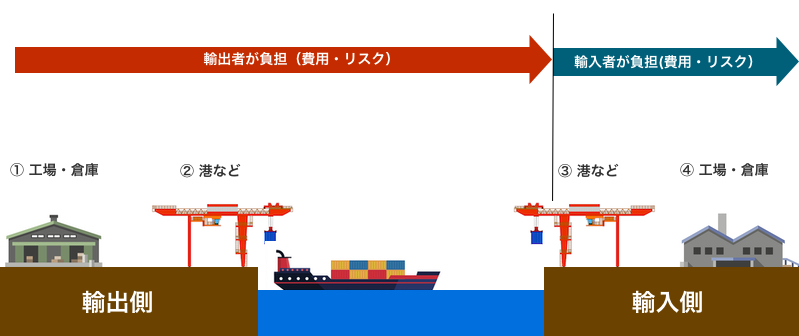
Cost Burden
In Group C (CFR, CIF, CPT, and CIP), the exporter bears the cost until the port of import. This is the same as the image mentioned earlier.
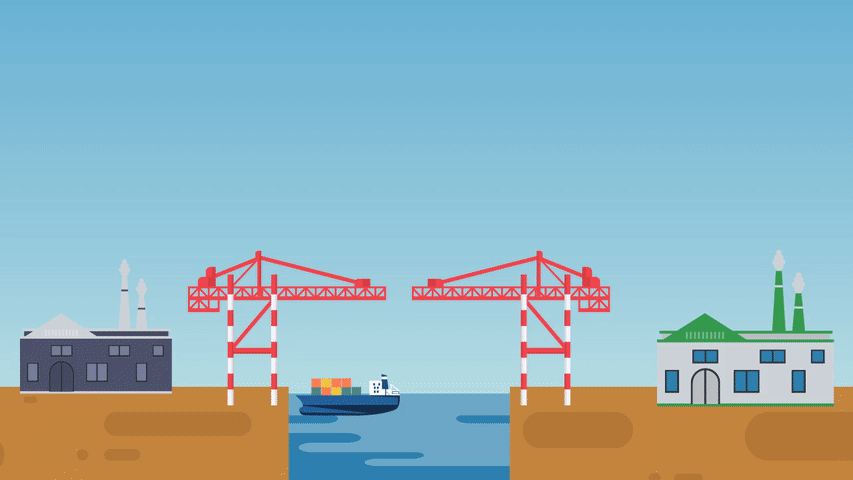
Risk Burden
Group C’s point at which the risk burden shifts is similar to that of Group F.

CFR and CIF

In CFR and CIF terms, the shifting point of burden risks is when the goods are loaded on the designated vessel at the port of export.
CPT and CIP

In CPT and CIP terms, the shifting point of burden risks is when the goods are delivered to the carrier, which could be a warehouse or terminal at the port of export.
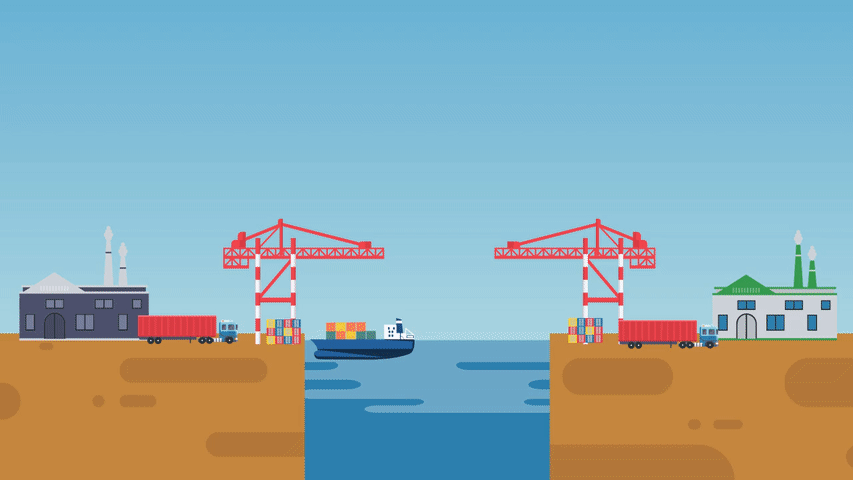
Difference between CFR, CIF, CPT, and CIP
Besides the explanations provided above, a significant difference is that CIF and CIP include insurance.
The exporter arranges the insurance:
・CIF: Cost, Insurance & Freight
・CIP: Carriage & Insurance Paid to
The importer arranges the insurance:
・CFR: Cost & Freight
・CPT: Carriage Paid to
How to Prepare an Invoice
In the case of CIF, the details are stated as follows:
- Incoterms: CIF
- Unit Price: Goods’ cost (Including transportation costs to the port of import and insurance premium)
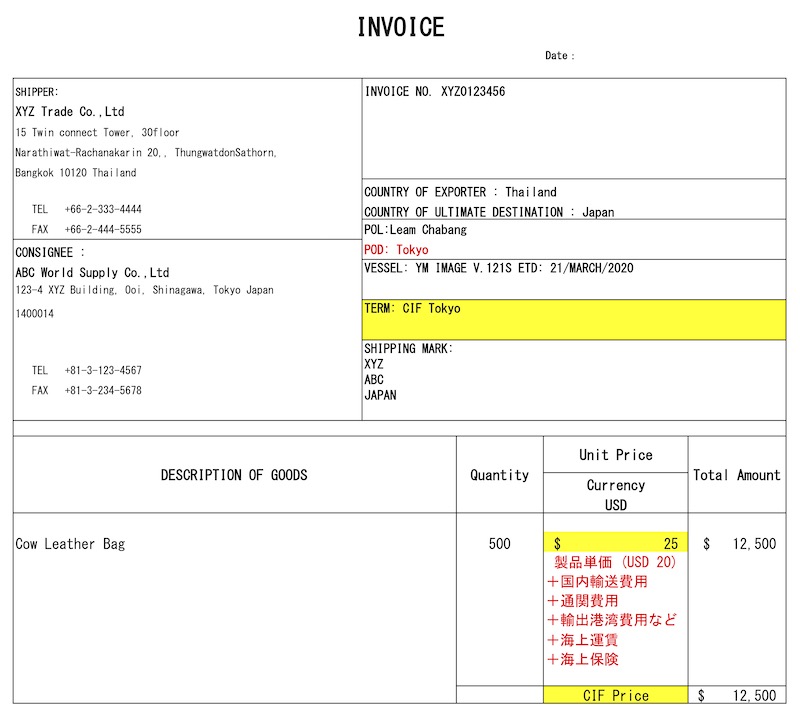
The red text is just for your reference and not necessary for practical work.

Sometimes, we may separate the product unit price and transportation cost for customs purposes, though.
Summary
In Group C, it’s important to note the point at which cost and risk transfer from the exporter to the importer is different for each.
Additionally, in CIF and CIP terms, insurance is the exporter’s responsibility, whereas, in CFR and CPT, it becomes the importer’s responsibility.

Enhanced Learning with Videos
Test Yourself
Reinforce your understanding of this topic by working through the exercises. Attempting the exercises without referring to the material as much as possible is advisable.




